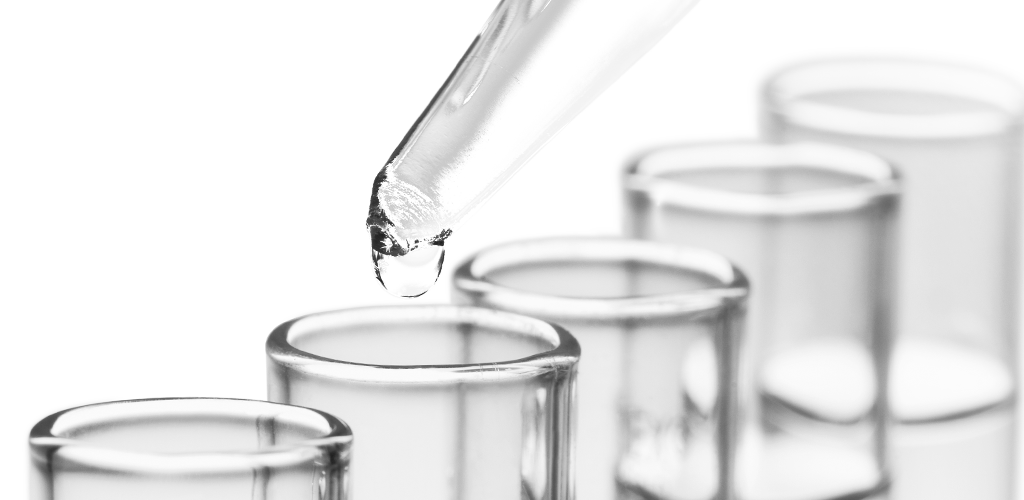Endotoxin and Pyrogens
Biochemistry
Pyrogens are heat-stable, dialyzable substances of apathogenic and pathogenic bacteria and other microorganism. These substances can be divided in endogenous and exogenous Pyrogens. Already a small amount (<1 µg/kg bodyweight) may cause fever and chills after parenterally administration. The most effective pyrogens are endotoxins.
Endotoxins are cell wall components from the exterior membrane of gram-negative bacteria. All endotoxins share similar structural properties. They consist of a polysaccharide and a lipid. The polysaccharide part is, depending on the bacteria, structured in different ways. It always contains an O-specific chain consisting of repeating units of 3 to 8 sugars. This is followed by the two-part nucleus region, consisting of heptose and saccharic acid Kdo (2-keto-3-desoxy-octone acid). The lipid part consists of glucosamine molecules, two phosphate groups and fatty acid chains. This region is the least variable component in all endotoxins and responsible for the toxicity.
Clinical Significance
Endotoxins activate macrophages, which - as a consequence of the stimulation - release a number of mediators, amongst others cytokines such as the tumor necrosis factor (TNF) and the Interleukins 1, 6 and 8, activated oxygen species such as hydrogen peroxide, the hyperoxide anion and nitric oxide (NO) as well as various lipids such as prostaglandin Ez, thromboxan A2 and the platelet activating factor (PAF). Excessive activation leads to the patient suffering a gram-negative sepsis, which manifests itself with a high fever, a drop in blood pressure, clot formation in the capillaries, lethal shock and multiorganic failure (MOF). Due to the clinical significance described, the contamination of pharmaceutical preparations and medical products with endotoxins and / or pyrogens must be avoided at all costs, and the non-presence must be documented before release by appropriate testing.
Indications
- Determination of endotoxin as control of drugs
- Determination of endotoxin as control of water
- Determination of endotoxin as control of medical devices
Literature
- Rabe FW and Friberger P. Endotoxinbestimmung mit einer neuen quantitativen Methode. Forum Mikrobiologie 10, 176-180, 1987.
- Barclay G.R. Endotoxin-core antibodies: time for a reappraisal? Int Care Med 25, 427-429, 1999.
- Young NS, et al. An invertebrate coagulation system activated by endotoxin: Evidence for enzymatic mediation. J Clin Invest 51, 1790, 1972.
- Redl H. et al. Special Collection and Storage Tubes for Blood Endotoxin and Cytokine Measurements. Clin Chem 38/5, 764-765, 1992.
- Friberger P, et al. A quantitative endotoxin assay utilizing LAL and a chromogenic substrate. In endotoxins and their detection with the Limulus Amebocyte Lysate test. Prog Clin Biol. Res. Vol. 93, Eds Watson SW, Levin J and Novitisky TJ, Alan R. Liss Inc. NY, 1982.
- Bacterial Endotoxins. European Pharmacopoeia-Supplement 2001, 79-87.
- <85> Bacterial Endotoxins Test. USP-24, 2001, 2875-2879.

